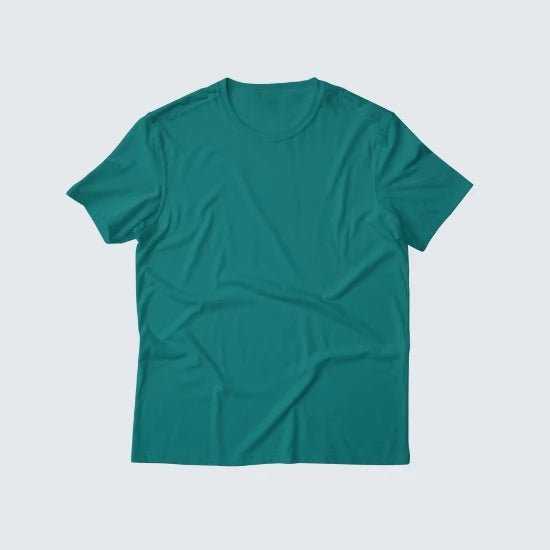
Silk screen printing: a distinct artistic and industrial technique
Share
introduction
Have you ever wondered how images are printed on T-shirts or other products? Would you like to know more about a unique printing technique called screen printing? Would you like to learn how to use this technique to create customized products or merchandise with your own style? Then you've come to the right place. In this article, we'll explore the concept, history, features, techniques, tools, and materials of screen printing, as well as some examples, applications, problems, and solutions related to this technology. We hope you find this article useful and that it sparks your interest and creativity.
History of screen printing

Screen printing is a relatively old technique, first appearing in China in the 10th century , where rare silk was used to create numerous small-hole screens through which designs were printed. The technique then spread to neighboring countries, such as Japan and Korea , where it developed significantly in artistic and religious designs. In the 18th century , the technique reached Europe , where it was used to print fabrics, clothing, and upholstery. However, it did not become widespread due to the scarcity and high cost of silk. In the 20th century , the technique spread to the United States , where it evolved through technological advances and the use of new materials such as nylon, polyester, and vinyl. The technique has also flourished in the fields of art, advertising, and industry, producing famous works such as Andy Warhol's paintings.
Advantages of silk screen printing

Screen printing is a unique technology compared to other printing methods, offering numerous advantages that make it a favorite among many users. These advantages include:
- Quality : Screen printing provides high-quality printing of images or text. It uses a special, relatively thick ink, allowing details to be clearly displayed and colors to stand out strongly.
- Durability : Screen printing ensures long-lasting durability for printed images or text. It uses special ink that is resistant to heat, light, and moisture. This technology also allows for printing on strong materials such as metal.
silk screen printing techniques
Screen printing is a technique based on a simple principle: marking the areas through which ink is allowed and prohibited on a silk screen mounted on a frame. This screen is perforated with a specific pattern that matches the design to be printed. When this screen is placed over the printing surface, the ink is pushed onto the surface using a roller, brush, or mechanical device. This transfers the design to the surface in the desired color. There are several types of screen printing techniques, differing in the method of marking the permitted and prohibited areas on the screen. These techniques include:
- Photoemulsion printing : This technique relies on a light-sensitive material called the emulsion, which completely covers a silk screen. A transparent model of the design is then placed over the emulsion and exposed to light. This causes the emulsion to harden in the areas of the screen that do not reach the light, which correspond to the design, while the emulsion remains unhardened in the areas that reach the light, which correspond to the voids. The unhardened emulsion is then washed with water, creating openings in the screen that allow the ink to pass through.
- Glue printing : This technique uses a sticky substance called glue, which completely covers a silk screen. The design is then drawn onto a transparent paper and cut out with a sharp knife. This creates a perforated pattern of the design. This pattern is then placed over the glue and scraped off with a sharp tool. This removes the glue from areas that correspond to the design, while remaining glue in areas that correspond to the gaps. This creates openings in the screen that allow ink to pass through.
- Cut-paper printing : This technique uses plain or patterned paper, which is cut with a sharp knife, scissors, or laser. This creates a perforated pattern for the design. This pattern is then placed on a silk screen and secured with tape or staples. This creates holes in the paper, allowing ink to pass through the screen to the printing surface.
Tools and materials used

Screen printing is a technique that requires a set of tools and materials to facilitate smooth and efficient printing. These tools and materials include:
- Frame : It is a solid structure made of wood, metal or plastic.
- Mesh : A thin fabric made of silk, nylon, polyester, or vinyl, which is used to create openings that allow ink to pass through.
- Ink : A liquid or gel-like substance used to add color to the printing surface.
- Roller : A tool made of wood, metal, or plastic that pushes ink onto the printing surface. The roller contains a rubber or plastic blade, called a press, which facilitates smooth, even flow of ink.
- Printing surface : This is the material on which the design will be printed. The surface must be clean, dry, and smooth to avoid compromising the quality of the design. Various materials can be used as printing surfaces, such as paper, fabric, glass, and wood.
Diversity in screen printing

Screen printing is a versatile and flexible technology, allowing for the printing of a variety of colors, shapes, and sizes. Among this variety are:
- Colors : Any color can be used in screen printing, whether primary, composite, or gradient. You can print one or more colors on the same material, using a different screen for each color.
- Shapes : Multiple shapes can be used in screen printing, including geometric, natural, and imaginative forms. One or more shapes can be printed on the same material.
- Sizes : Various sizes can be used in screen printing, both small and large. One or more sizes can be printed on the same material, with a different mesh used for each size. The design can also be resized to create different effects, such as enlargement or reduction.
- Materials : Screen printing can be used on a variety of materials, from textiles to solid materials. It can print on easy-to-print materials, such as paper, fabric, glass, and wood.
Examples of screen printing

Screen printing is a technique used to produce products with fine details, demonstrating quality, beauty, and creativity. Examples include:
- Posters : These are products that utilize screen printing extensively. They are used to spread messages, advertisements, invitations, or raise awareness. Posters can be printed in a variety of colors, shapes, and sizes.
- T-shirts : These are products that sometimes use screen printing. Printed in a variety of colors, shapes, and sizes, they are worn for various occasions, events, or activities.
- Paintings : These are artworks that commonly use screen printing. They are used to demonstrate skill, expression, or experimentation. Paintings are printed in a variety of colors, shapes, and sizes and are displayed in galleries, museums, or homes.
Silk screen printing applications
Screen printing is a popular technique used in these areas:
- Advertising : It is used to produce various advertising media.
- Decoration : is a field that uses silk screen printing to produce various decorative items.
- Industry : Screen printing is widely used to produce a variety of industrial goods, such as printed circuit boards, solar panels, CDs, buttons, and labels. These products help improve performance, quality, and efficiency.
- Education : To produce a variety of educational materials, such as books, magazines, interactive programs, and educational games. These materials help facilitate learning, increase enjoyment, and develop skills.
Problems and challenges of screen printing
Screen printing is a technology that faces some problems or challenges that may affect its quality or spread. These problems or challenges include:
- Competing with new technologies : This is a challenge related to the emergence of new printing technologies, such as digital printing or 3D printing . These technologies may be faster, cheaper, more precise, or more versatile than screen printing. Therefore, it is necessary to keep pace with technological developments and technical and industrial innovations to maintain the excellence of screen printing.
- Design or implementation difficulties : These challenges relate to the level of skill or expertise required to complete the screen printing process. This process can be complex, tiring, or expensive, especially if the design includes multiple colors, shapes, or sizes. Therefore, professionals must be trained and equipped with the appropriate tools and materials to perform the screen printing process effectively.
conclusion
In this article, we've reviewed the concept, history, features, techniques, tools, and materials of screen printing, as well as some of the diversity, examples, applications, problems, and solutions associated with this technology. We hope this article has been helpful and has sparked your interest and creativity in the field of screen printing.




